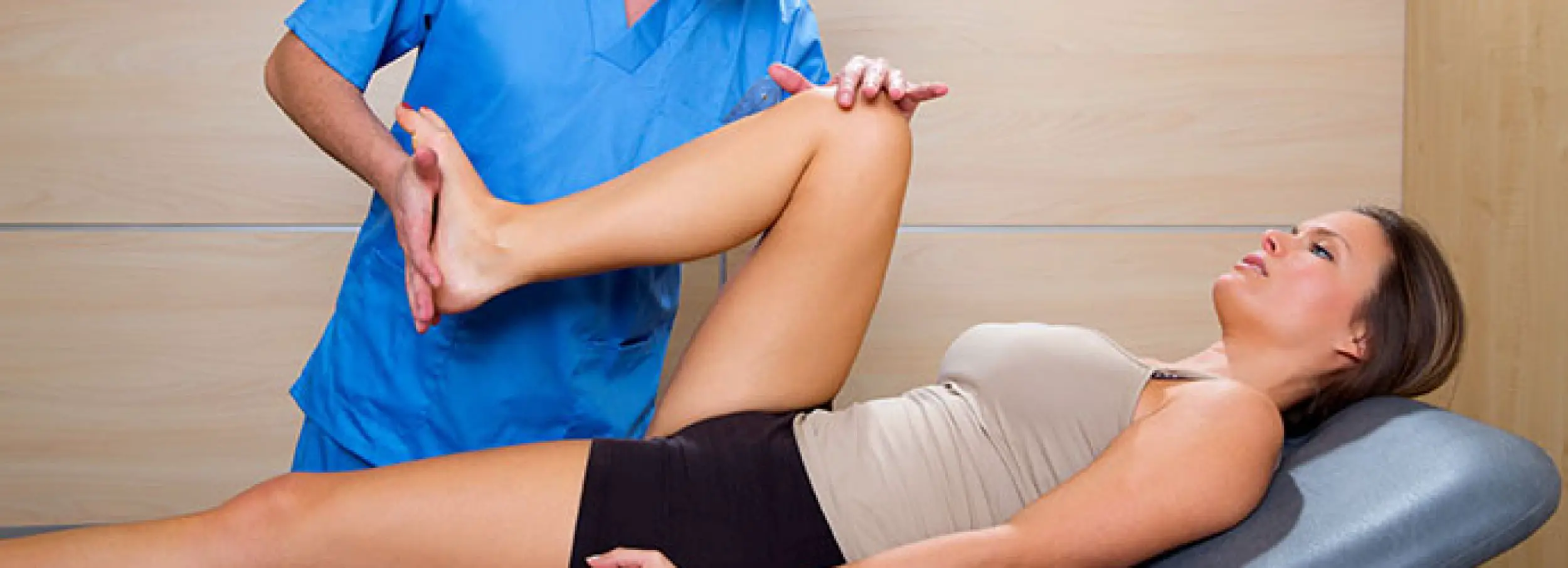Falling from an extreme height may result in severe fractures and considerable damage, especially if your knees or another articulation receives the impact. However, sometimes we neglect the importance of falling in our own homes or walking up the street. This is revealed by the fact that 1 out of 4 older people falls from their own height every year and less than half go to their doctor for a check-up.

However, as you will see in this article, falling on concrete and other hard surfaces might be a very dangerous thing, especially in high-risk patients. If you are experiencing knee pain after a fall on concrete, this article will be helpful to know what is happening, whether or not you should worry about it, and what can you do at home.
Sources of knee pain after a fall on concrete
If you fell on concrete or any other hard surface and started experiencing knee pain closely after this episode, chances are you sustained an injury to the articulation of your knee or any other related structure. These are the most common sources of knee pain, starting from the mildest to the most severe cause:
- A bruise or contusion: It is visible to the naked eye, and there’s not much else to say. An open wound to your knee will keep on hurting and bothering you until it heals. Since this is a highly movable articulation, the healing process might be complicated in very active individuals.
- A ligament sprain: The most commonly affected ligament in your knee is called anterior cruciate ligament, and it is located deep within the articulation, right in the middle. However, there is also a posterior cruciate ligament, and lateral ligaments situated to the sides of the articulation.
- A meniscus tear: The meniscus is the cartilage that separates your bones. It lays in between and provides a cushion to the constant movement. A meniscus tear is usually accompanied by ligament sprains as well.
- A dislocation of your kneecap: This is the bone located in front of your knee, also known as patella. This bone may move out of place and causes a terrible knee pain that starts right away and will only improve after bringing your kneecap back in place.
- A fracture: It is the most feared outcome in the elderly and other susceptible patients. A fall on concrete or any other hard surface might result in a fracture in the tibia, the patella, or any other bony structure of the knee. It typically causes a lot of pain and swelling, among other signs and symptoms we will cover in the next section.
High-risk patients and warning signs
As we have mentioned in the previous section, the elderly is one of the most susceptible population when it comes to falls from their own height. More than $50 billion were destined to treat fatal and nonfatal falls in older adults in the year 2015, and knee problems are just the start.

They typically cause hip fractures, severe head injuries, and apprehension in the elderly population who becomes afraid of falling once again, reducing their levels of activity, leading to muscle weakness and further increasing the risk of elderly falls.
Another high-risk population is people with arthritis and re-injuries in the knee. If you have an underlying condition in your knee, such as a previous injury, a knee replacement surgery, knee osteoarthritis or any other, every fall matters. You don’t need to have severe pain and limitation to come to your doctor and ask about it.
However, what if you’re not in any of these high-risk groups? You should still look for medical assistance if you’re displaying the following warning signs:
- Severe swelling: If the swelling is severe enough for you to feel and others to notice, it is probably caused by a severe problem. Ligament sprains and meniscus tears usually have severe swelling, and even though it might resolve after a while, you need to go to the doctor because a ligament sprain will result in knee instability and increase your risk of falling once again with more severe consequences.
- Knee deformity: If your knee does look deformed and irregular, it might be caused by a fracture or dislocation. Severe swelling will also give you a considerable difference if you compare it to your healthy knee.
- Popping sounds: If you fell and heard a popping sound coming from your knee just before the pain started, this is a sign of a ligament sprain. You might need physical therapy to improve your symptoms, but if you do nothing, it may result in serious instability.
- Movement changes: If your range of motion becomes compromised or your knee feels as if giving out because there’s a broader range of motion, they are both problems you will need to check out with your doctor. Not being able to straighten your leg after a while is also a warning sign. Keep in mind this might be common if you have a bruise or open wound.
What can I do after a Fall?
As you have seen, many cases of knee pain after a fall on concrete should be attended by a healthcare professional. That is especially the case if you suffer from an underlying condition in your knee or in your musculoskeletal system, and if you’re a senior. However, if you’re not into this high-risk group and you don’t have warning signs, chances are you will be fine by applying the RICE principle, which is basically Rest and applying ICE.
Resting your articulation might require to reduce physical activity to the minimum for a while, and in some cases, you might choose to use crutches or a knee immobiliser. Try not to apply ice directly on your skin. Instead, use ice packs or cover it with a clean towel or fabric. If you have a bruise or open wound, be careful to remove all of the dirt and wash the area appropriately with abundant water.
If your symptoms do not improve after the course of one or two days, and if you start experiencing one of the warning signs described above, keep on resting and applying ice and go to your doctor as soon as possible to get a proper physical exam and indications according to your case.
References:
Calmbach, W. L., & Hutchens, M. (2003). Evaluation of patients presenting with knee pain. Part I. History, physical examination, radiographs and laboratory tests. Am Fam Physicians, 68(5), 907-12.
Gupte, C., & St Mart, J. P. (2013). The acute swollen knee: diagnosis and management. Journal of the Royal Society of Medicine, 106(7), 259-268.
Bergen, G. (2016). Falls and fall injuries among adults aged≥ 65 years—United States, 2014. MMWR. Morbidity and mortality weekly report, 65.
Stevens, J. A., Ballesteros, M. F., Mack, K. A., Rudd, R. A., DeCaro, E., & Adler, G. (2012). Gender differences in seeking care for falls in the aged Medicare population. American journal of preventive medicine, 43(1), 59-62.
Florence, C. S., Bergen, G., Atherly, A., Burns, E., Stevens, J., & Drake, C. (2018). Medical costs of fatal and nonfatal falls in older adults. Journal of the American Geriatrics Society, 66(4), 693-698.
Vellas, B. J., Wayne, S. J., Romero, L. J., Baumgartner, R. N., & Garry, P. J. (1997). Fear of falling and restriction of mobility in elderly fallers. Age and ageing, 26(3), 189-193.

I fell on concrete landed on my left knee.now I got a water bubble the size of egg right below my knee. Pls let me know something asap
Sounds really bad Barbara. You should go to your nearest emergency department immediately!